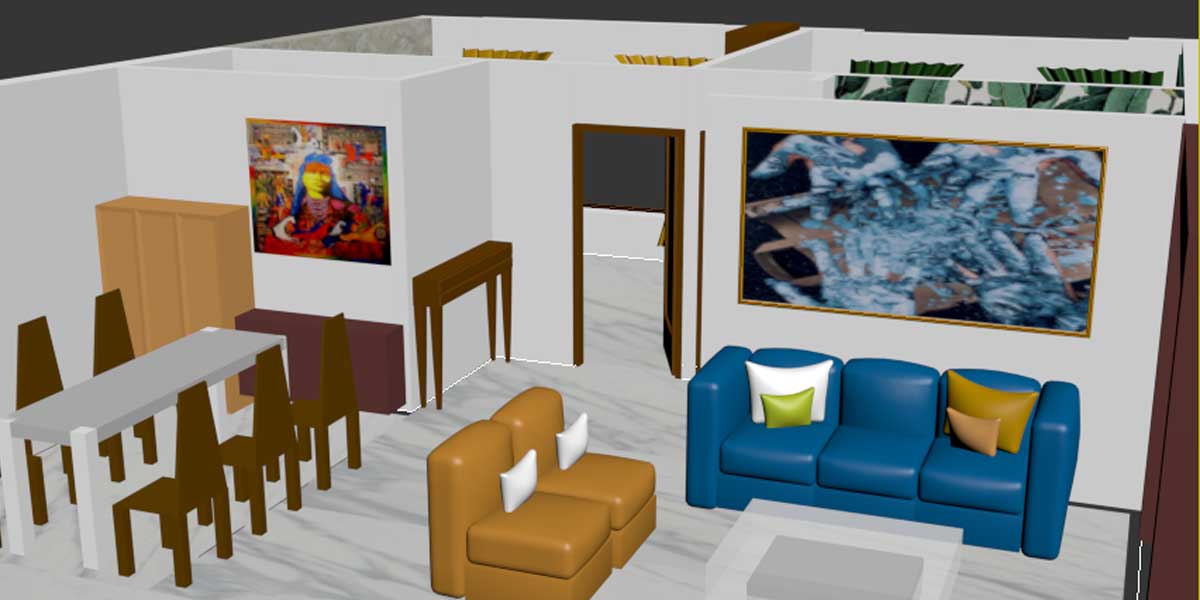

In today’s world, when digitalisation is increasing at an all-time high pace, it comes as no surprise that the interior designing process has evolved in a technologically driven industry. The presentation of designs from paper to screen has been a common adaptation throughout the design industry that has now evolved to a three-dimensional projection. And that’s where the concept of virtual reality (VR) and augmented reality (AR) comes into the picture.
The applications of AR and VR have been in practice in the design industry for quite some time now, but their role and importance has exponentially increased owing to the ongoing COVID-19 pandemic. People are forced to stay at home because of precautionary measures; they are working and studying from home. Thus, the need to revamp personal spaces according to individual work requirements has surfaced in quarantine time. A lot of customers are looking for individual furniture items like study tables, bar units and sofas and they would like to see how their space will look with these items.
This practical visualisation is only possible through VR, where you can upload the actual photograph of your space and then virtually place the shortlisted furniture to see how it gels with the overall theme of the space. With VR technology, buyers can take a digital walkthrough of their new furnished work and study spaces.
Providing complete 360° virtual content, VR plays a crucial role for designers to understand customer requirements and provide customised furniture design from inception. They can understand the exact expectations of their clients and present the final designed products. It is a time-effective practice for both parties that also helps in visualisation of the space.
AR allows clients to experience potential purchases by installing real-time tables, furniture, etc, on their phones so they can understand how each product will look like with the room’s paint or lighting. One can even rotate and control the positions of the furniture using the device controls. All you need is an app and a mobile phone.
For example, when designing the London outpost of Stockholm-based contemporary photography museum Fotografiska, Swedish architecture firm Guise eschewed 2D renderings for a series of complex VR simulations to create a nearly photographic experience of their glass, galvanised metal and terrazzo building, whose materiality is meant to reference the history of the medium itself. Also, furniture giant IKEA uses a catalogue app where users can scan and select images from a printed catalogue and then access extended rich content! Another example is Decorilla, a design firm that makes use of VR to communicate with their clients in style. As the firm operates only online, clients send in their room dimensions along with images. The designers reply with a digital proposal along with a branded Google Cardboard viewer. With this, the clients can have a 3D walkthrough of their new, furnished room.
VR and AR help the client visualise spaces from the comfort of their home, helping to overcome the shortcomings of 2D representations in visualising the real experience of being in different spaces. Clients can choose several products remotely without going outside. Thus, VR and AR, which are interactive and user-friendly, help buyers make more informed purchase decisions. Clients can change the colour, position and product finish themselves and experiment with various furniture designs to see how the space will look with different variations.
At a time, when most industries have been negatively affected by the lockdown, technology has provided the design industry with an even better alternative in the form of VR and AR—in the form of new ways for clients to explore, experiment and purchase products based on experience at a time when going outside is not feasible. Indeed, the pandemic has made digital technology a necessity for the design industry to communicate design ideas between parties.
About the author: Vikas Goel is the cofounder of Lavana Architects & Interior Designers. He handles the business development and client acquisition for Lavana and has over 20 years of corporate work experience in the sales and marketing domain.